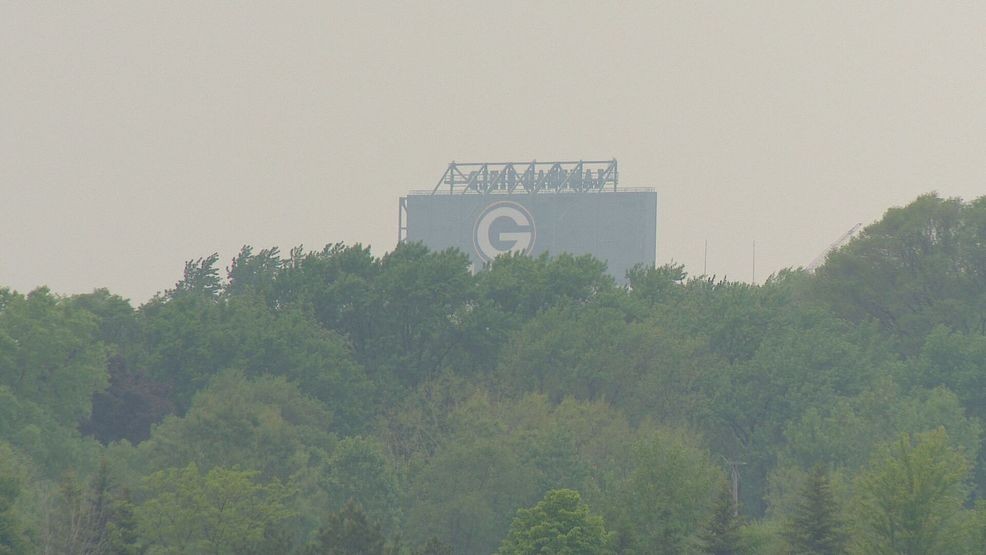GREEN BAY (WLUK) — Thursday evening, the Wisconsin Department of Natural Resources issued an air quality advisory as wildfire smoke moves over the state from Canada.
“A cold front is pushing down the smoke from Manitoba and Saskatchewan areas, and it’s bringing with it a pretty thick blanket of smoke,” says Craig Czarnecki, with the Wisconsin DNR.
As that thick blanket of Canadian smoke settles over Wisconsin, the entire state is under an air quality advisory for what’s called PM2.5.
“PM2.5 is the main pollutant of concern when we’re dealing with wildfire smoke, there are teeny tiny particles that can be inhaled, get in your lungs and bloodstream, and obviously cause a number of health problems,” Czarnecki explains.
DNR officials say the air quality index is between 101 and 150, the orange level, meaning the air is unhealthy for sensitive groups.
Good air quality levels are between 0 and 50.
While the advisory isn’t as severe as the Canadian wildfires from 2023, where PM2.5 levels in Wisconsin reached the very unhealthy category, doctors stress that the incoming smoke can still be harmful for sensitive groups.
“People with asthma, lung disease, heart disease, many of the problems in their lungs is they have chronic inflammation and irritation of their airways, with the smoke exposure you get tiny fine particulate matter that can get deep into the lungs, worsening that inflammation causing obstruction of the airways, irritation of the muscles around the airways causing them to clamp down and develop even asthma attacks secondary to just breathing and waking around,” says Dr. Vivek Balasubramaniam, a professor of pediatrics with the University of Wisconsin Madison.
Dr. Balasubramaniam remembers dealing with patients experiencing issues when Colorado wildfire smoke crept to Wisconsin in 2020.
“I had lots of my patients who had difficulty breathing, lots more exacerbations and flares of asthma, the ERs around the area were seeing more patients coming in with breathing problems,” he says.
Thankfully, this round of smoke is expected to move out throughout the weekend. But while it’s here, those sensitive groups are recommended to do a few things by health officials:
Continue taking all medications as usualHave a rescue plan and extra inhalers on handLimit strenuous outdoor activitiesConsider N95 masking when outsideStay inside, close windows and doors
Officials stress the importance of monitoring the air quality in your area. You can do so by using the EPA’s AirNow.org, which shows PM2.5 levels in your area and has an interactive map for those wondering where the wildfire smoke is.
You can also find resources and information about air quality alerts on the Wisconsin DNR’s website here.
